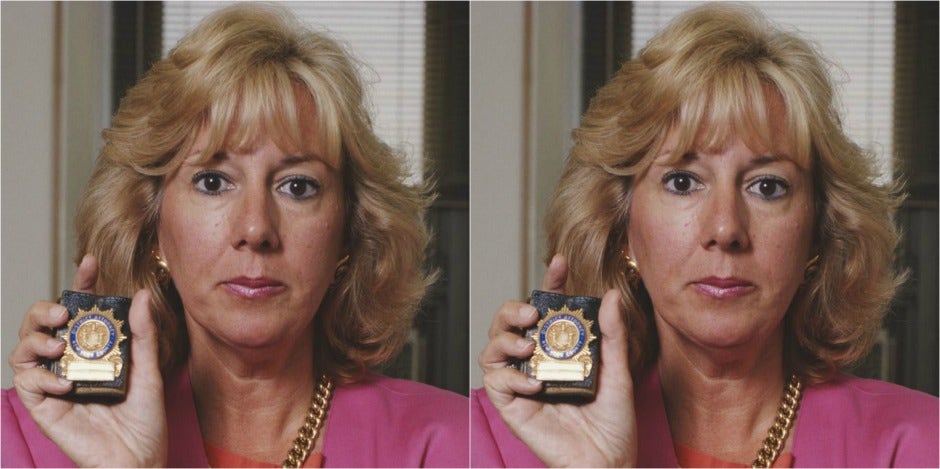Who Is Elizabeth Lederer? New Details On The Central Park Five Prosecutor And Where She Is Today
She's still at work.
 Getty/Netflix
Getty/Netflix In 1989 New York City was a very dangerous place. Drugs and violence plagued the streets and racial tensions went from simmering just under the surface to practically boiling over. When a young female jogger was attacked and brutally raped and beaten, everything seemed to come to a head, and the city was eager to solve the crime and cut down on violence —at whatever the cost...
This led to a tragic miscarriage of justice where five men of color were arrested, tried and convicted of the horribly brutal crime. While they were all later exonerated and the real criminal found and prosecuted, the terrible injustice cannot be denied and its reprecussions are felt even now. Who is Elizabeth Lederer? She was a prosecutor on the case against the boys. Here's what she did and where she is now.
1. Elizabeth Lederer
Elizabeth Lederer was the Assistant District Attorney responsible for presenting the cases against the five black and Latino teenagers who were arrested and charged with the rape and violent beating of 28-year-old Trisha Meili who was attacked while jogging in Central Park in New York City in 1989. After the crime occurred, one of the first things that Lederer did was visit the hospital where Meili was being treated. She spoke about it later at length to Oprah magazine. “Her head was in a bandage turban. Her face was swollen. She had tubes in her mouth and nose,” said Lederer who also shared that at the time Meili remembered nothing of her attack.
2. Her Case
At the time of the Central Park Five trial, the mood in the United States in general was one of hightened violence, where racial prejudices ran high and so did violence. In 1989, according to The New York Times, 837 murders, 1,600 rapes, more than 43,000 robberies and 34,000 assaults were reported. The pressure to convict those charged was at an all time high. In order to build a case that assured a conviction (whether or not the boys arrested were even involved in the crime that took place), Lederer used confessions obtained during police investigations to make it clear that each boy placed another at the scene of the crime. That's all well and good, but it doesn't actually prove that any of the boys committed the crime.
The case might sound riddled with flaws (because it was, flaws, racism, and political pressure) but it was one that worked. In the end, the case that Lederer presented, broken though it was, proved enough to send all five defendants in the case to juvenile hall and then to prison for years and years of their adult lives.
3. Botched Forensics
After the case long over, people began looking at it again and realizing just what a miscarriage of justice it truly was. While Lederer's case might have been so effective that it put those innocents away, it was not a perfect prosecution by any stretch of the imagination. In fact, in terms of forensics, much of the evidence that was presented was just plain incorrect. Most notable among the pieces of evidence that were incorrectly used to prosecute these boys were strands of hair that were collected from the scene and from the victim's body herself. At the time she argued that this hair was a perfect match for one of the boys who was on trial. Years after the fact, DNA technology would be used to prove that it didn't even come close.
4. Matias Reyes
In 1989, Central Park was not a safe place. It was home to many of the city's drug dealers and this was in an era where the crack epidemic was a real problem. When Meili went for her jog she had no idea that dozens upon dozens of men were in the park doing something called "wilding" — attacking people as they passed by simply for sport. Evidence would later prove the boys convicted weren't the only people up to no good. Modern day DNA technology went on to prove that the semen obtained in the rape kit used on Meili did not match any of the five boys who were arrested and convicter of the crime. There was a match found, however. The semen in question belonged to serial rapist Matias Reyes who would eventually admit to raping and beating Meili.
5. Lederer Today
As you can imagine, with the case having the reputation that it does, Lederer does not often discuss the case in public or on the record. She still works in the legal field in New York as an assistant prosecutor with the Manhattan Distract Attorney's office where she has a proven record of convictions. This should be a positive, but given her history frankly, it's a little unsettling, to put it midlly.
Lederer has another job, as well. She works as an adjunct law professor at Columbia School of Law. In 2012, after a movie made by Ken Burns about the case and its fallout, a petition began circulating trying to remove her from her role. To date, she is still employed by the law school.
Rebecca Jane Stokes is a writer living in Brooklyn, New York with her cats, Batman and Margot. She's an experienced generalist with a passion for lifestyle, geek news, pop culture, and true crime. For more of her work, check out her Tumblr.
